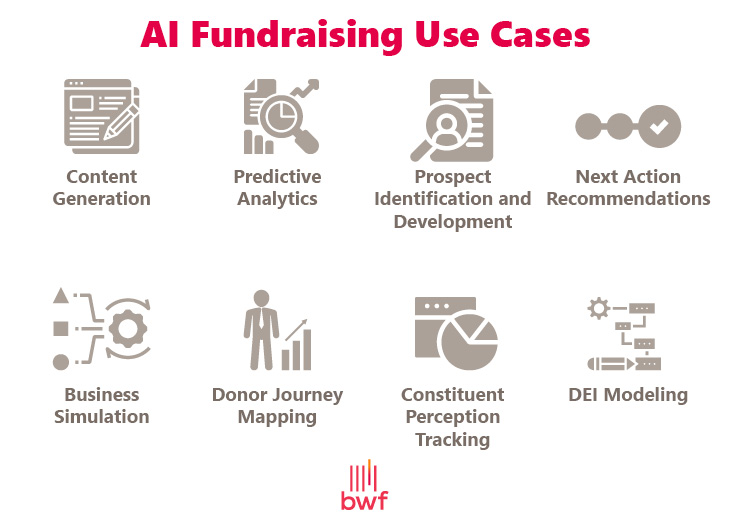Understanding the Vital Parts of Nonprofit Fundraising: Trick Practices for Enhancing Economic Sustainability
Not-for-profit fundraising is a complex undertaking that calls for a nuanced understanding of a number of essential parts to make sure monetary sustainability. From tactical planning that lines up with mission-driven objectives to the farming of purposeful donor relationships, each element plays a vital role in the total success of fundraising efforts.
Strategic Fundraising Preparation
Strategic fundraising planning is a critical part for any not-for-profit company aiming to attain its goal successfully. This procedure involves establishing clear, quantifiable goals that straighten with the company's overall purposes while considering the special demands of the neighborhood it offers. A well-structured fundraising plan not only recognizes prospective earnings sources however likewise lays out the strategies and methods needed to engage those resources.

Additionally, leveraging information analytics can inform decision-making by offering insights right into donor behavior and trends, allowing nonprofits to tailor their fundraising methods appropriately. Regular reviews and updates of the fundraising plan are important to react to altering scenarios and emerging opportunities. Eventually, an extensive strategic fundraising strategy offers as a roadmap for nonprofits, cultivating financial security and allowing them to fulfill their objective properly.
Building Benefactor Relationships
Building strong contributor relationships is essential for the long-term sustainability of any type of not-for-profit company. These relationships are the foundation whereupon effective fundraising initiatives are constructed, as they cultivate count on, commitment, and involvement among supporters. Nonprofits have to prioritize cultivating meaningful links with their donors, recognizing that each communication can substantially impact their determination to contribute.
To effectively build contributor relationships, companies must focus on tailored engagement techniques. This involves recognizing the rate of interests, motivations, and providing patterns of private donors, making it possible for tailored interaction that reverberates with them. Regular updates on business progression, program end results, and the effect of contributions strengthen the value of their support.
In addition, sharing appreciation is essential. Recognizing donations immediately and truly not just improves partnerships yet additionally urges recurring support. Occasions such as benefactor gratitude events supply possibilities for individual links and community structure.
Eventually, nurturing contributor relationships transcends transactional interactions; it embodies a partnership where benefactors really feel valued and important to the objective. By spending time and sources in relationship-building, nonprofits can enhance donor retention, boost lifetime offering, and make sure economic security for their efforts.
Efficient Communication Strategies
Effective communication techniques play a critical function in see it here strengthening the strong benefactor partnerships that nonprofits make every effort to cultivate. Clear and consistent messaging is essential for conveying the objective, vision, and impact of the company. Verbalizing the distinct worth proposal helps benefactors recognize exactly how their contributions make a substantial difference.
Making use of numerous interaction networks-- such as emails, social media sites, e-newsletters, and in-person events-- ensures that messages get to a diverse target market - nonprofit agency. Tailoring communication to different contributor sections can boost engagement; for instance, significant donors might value detailed reports on funding allowances, while smaller see page sized donors might like succinct updates highlighting key accomplishments
Narration is one more powerful device in not-for-profit communication. Sharing compelling stories about recipients can evoke psychological responses and promote a deeper connection with the cause. Transparency about financials and program end results constructs trust fund, urging donors to remain involved over time.
Engaging the Neighborhood
Community interaction is necessary for nonprofits seeking to amplify their impact and cultivate a sense of possession among local stakeholders. Establishing a robust connection with the area not only improves visibility but additionally builds trust, essential for lasting fundraising efforts. By proactively involving area members in decision-making processes, nonprofits can straighten their missions with the needs and ambitions of the populace they serve.
To effectively involve the neighborhood, nonprofits should focus on transparency and open interaction. Hosting public discussion forums, workshops, and informational sessions permits significant discussion, where stakeholders can articulate their point of views and add to the company's vision. Additionally, working together with local businesses, institutions, and civic organizations can produce synergistic collaborations that take advantage of shared sources for higher impact.
An additional critical facet of community involvement is identifying and celebrating local contributions. Recognizing volunteers, benefactors, and fans cultivates a sense of belonging and commitment, motivating ongoing involvement. Furthermore, showcasing success stories and the tangible benefits of neighborhood support can inspire others to contribute.
Eventually, proactive area engagement grows a network of advocates that are invested in the not-for-profit's objective, ensuring enduring support and enhanced financial sustainability.
Using Technology and Devices

One vital device for nonprofits is a thorough contributor management system. These platforms make it possible for companies to keep thorough records of contributor preferences, contributions, and interactions, promoting individualized communication and engagement (nonprofit agency). In addition, utilizing online fundraising systems enables nonprofits to get to a wider target market, making it much easier for fans to contribute through various networks, including social media sites and email campaigns
In addition, the usage of task management tools can help simplify inner processes, guaranteeing that fundraising teams remain organized and concentrated on their goals. Automation software application can additionally simplify repeated tasks, such as sending out thank-you e-mails or suggestions, maximizing team time for more critical campaigns.
Verdict
In verdict, the essential components of nonprofit fundraising include calculated preparation, strong contributor relationships, effective interaction, community interaction, and the use of technology. These aspects collectively contribute to enhancing monetary sustainability and durability within nonprofit companies.
In addition, leveraging information analytics can notify decision-making by supplying understandings right into donor habits and patterns, allowing nonprofits to customize their fundraising methods as necessary.Structure solid contributor relationships is crucial for the long-term sustainability of any kind of nonprofit company.Reliable interaction strategies play an essential role in strengthening the strong donor partnerships that nonprofits make every effort to grow.One crucial device for nonprofits is a detailed benefactor administration system.In verdict, the necessary parts of nonprofit fundraising encompass calculated preparation, strong donor relationships, reliable communication, community interaction, and the utilization of innovation.